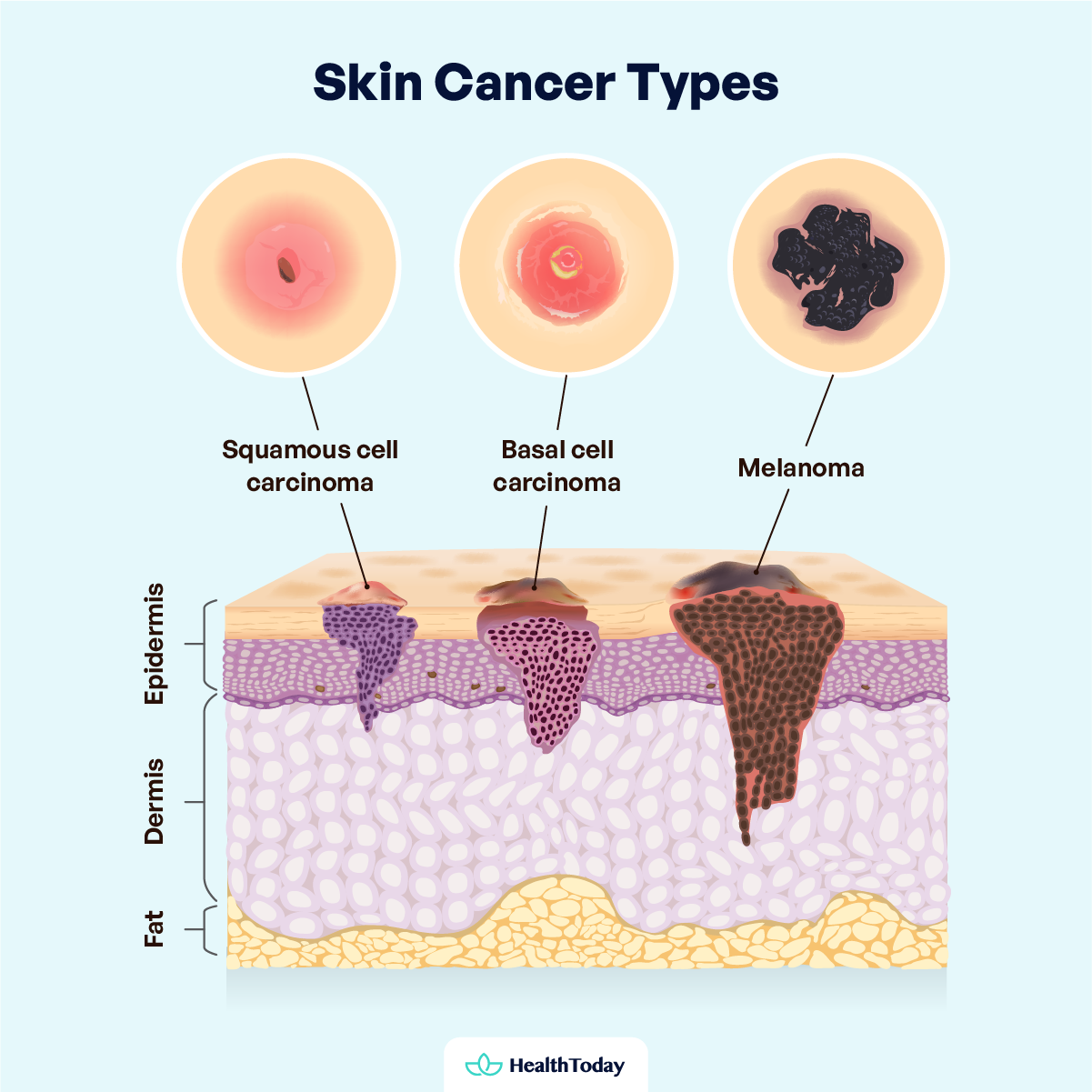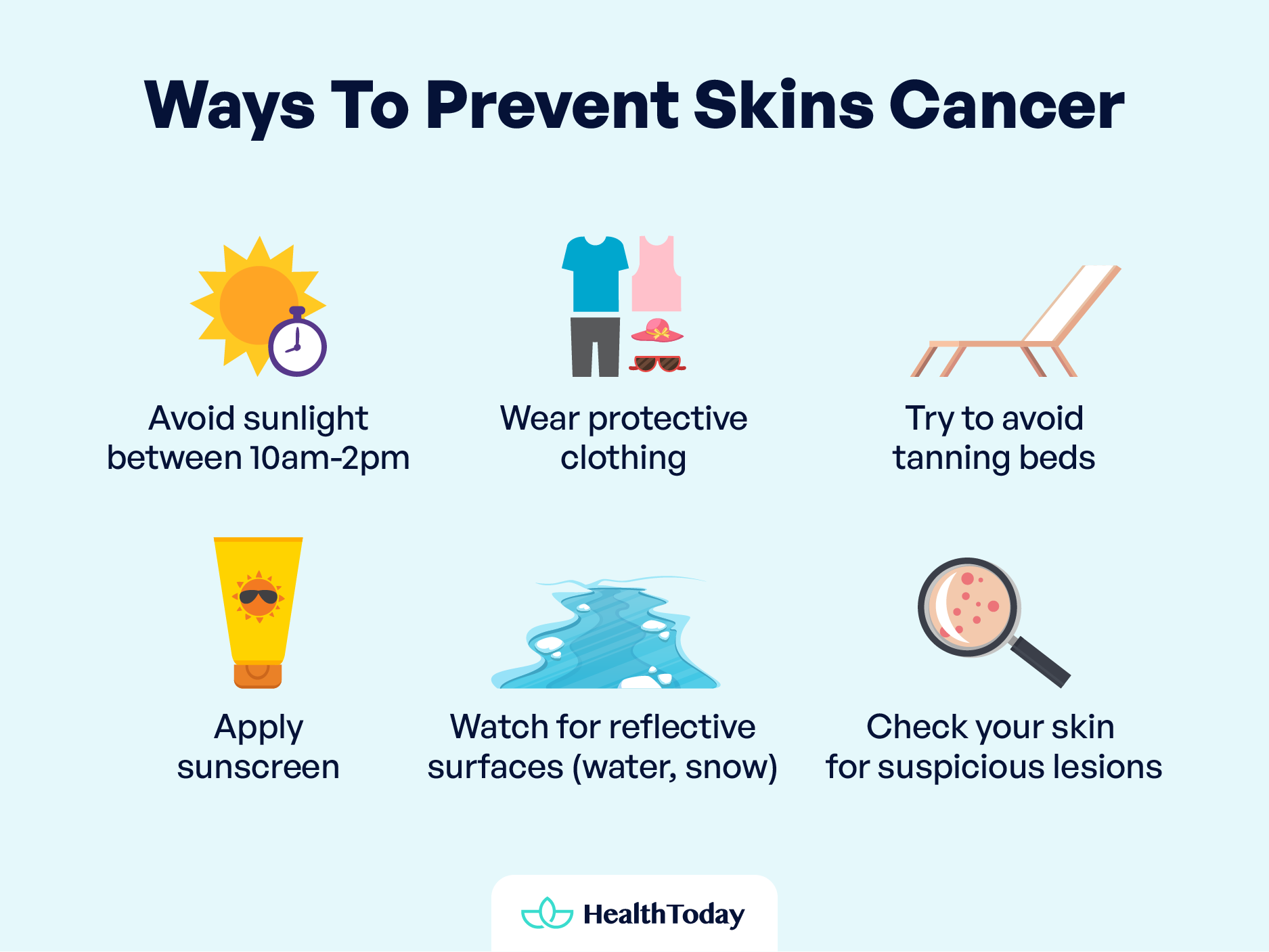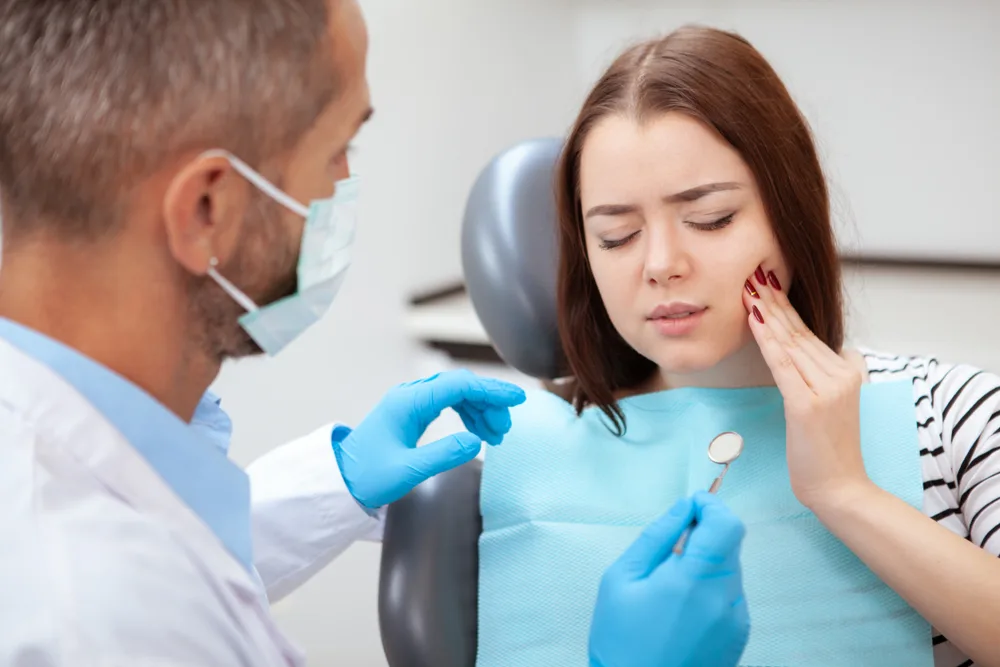Table of Contents
Yes, skin cancer can claim a person’s life. But the good news is it isn’t always a death sentence. Whether skin cancer is fatal or not depends on the type and stage of the cancer.
In this post, we’ll explore the survival rates for various types of skin cancer, the consequences of leaving it untreated, and effective prevention strategies to keep skin cancer at bay from the start.
Can you survive skin cancer: Is skin cancer fatal?
Skin cancer survival depends upon the type and the stage of cancer. Basal cell carcinoma has the most positive outcomes among all skin cancers, while melanoma is the most serious (3, 8). Survival is determined as a five-year survival rate after diagnosis. It is an estimated number of people alive after five years of having been diagnosed with that specific type of cancer at that particular stage in a specific population (12).
The skin has multiple layers composed of cells. If these cells start growing abnormally, it leads to cancer formation. Skin cancer has different types, some more severe than others (1). Whether skin cancer is fatal or not depends on the type and stage of cancer.
Survival rates by skin cancer types
The two layers of skin that are mainly involved in skin cancer are the outermost two layers, known as the epidermis and dermis. The type of skin cancer depends upon the type of cell involved, such as (2):
- Squamous cell carcinoma is derived from squamous cells that compose the top layer of the skin.
- Basal cell carcinoma is derived from basal cells at the base of the epidermis (the first layer of skin) just below squamous cells.
- Melanoma is derived from melanocytes, the cells responsible for producing pigment and giving skin its color.

Squamous skin cancer: Stages and symptoms
Squamous skin cancer is the second most common cancer of the skin. The most critical risk factor for its occurrence is sunlight exposure, which is why it is most common in areas exposed to the sun, such as the face, ears, arms, neck, etc. Fair people are more likely to develop it (3).
Squamous cell carcinoma (SCC) of the skin may also develop from precancerous lesions. This means that you may develop a lesion on your skin that is not cancer but has a chance of converting into cancer, such as actinic keratosis (dry, scaly patches) (3).
This type of skin cancer usually presents as a nodule/bump of firm consistency or a flat lesion with crusts (1). has different stages depending upon the degree of spread and size of cancer (4, 5):
- Stage 0: cancer cells are confined to the outermost skin layer, the epidermis.
- Stage 1: cancer cells have spread to deeper layers of skin.
- Stage 2: cancer cells travel in deeper layers of skin and may invade nerves but don’t reach neighboring tissues/organs or lymph nodes (lymph nodes are tissues involved in the functioning of the immune system of our body).
- Stage 3: cancer cells encroach the nearby lymph nodes.
- Stage 4: cancer cells metastasize (spread) to distant organs such as the liver, lungs, or brain.
The survival rate of Squamous cell skin cancer
Survival of this cancer depends upon the stage of cancer. Overall, the SCC of the skin has a good prognosis because it grows slowly and can be diagnosed in the earlier stage. It can be treated effectively, even if it spreads to distant skin or lymph nodes. On early detection, the five-year survival rate approaches almost 99 percent in the initial stages (5). The exact figure of the five-year survival rate for each stage has not been documented yet.
Can you die from squamous cell skin cancer?
It is very rare for someone to die from squamous cell skin cancer. Untreated SCC can destroy nearby tissues and nerves, but the exact number of people who died from this cancer is not yet known. These people are mostly those who have low immunity due to other diseases or medications or those people who don’t go to the doctor till the later stages of cancer (15).

Basal cell carcinoma: Stages and symptoms
Basal cell carcinoma develops from basal cells present at the base of the outermost layer of skin (epidermis). Basal cell carcinoma can occur anywhere, but the most common target places are the head and neck region. It is also more prevalent in white-colored people (3).
Basal cell carcinoma appears as a nodule with a pearly appearance or a sore that bleeds on and off (1).
Staging is usually done to determine the extent to which cancer has spread. Basal cell carcinoma is generally diagnosed before extensive spread; hence, it is usually not staged (6, 7). However, in rare instances when it spreads to deeper tissues or grows larger than 2mm, staging is usually done as follows (7):
- Stage 0: This stage is also known as carcinoma in situ. At this stage, cancer cells are confined to only the epidermis (outer layer of the skin).
- Stage 1: The tumor is less than 2 cm in size, but it hasn’t invaded lymph nodes. It will display at least one feature that can increase the chance of distant spread or recurrence, such as nerve invasion or being located near the ear or upper lips.
- Stage 2: At this stage, the size of the cancer is larger than 2cm but doesn’t encroach on lymph nodes or other organs. They also display features that can enhance the risk of recurrence or extensive spread, like stage 1.
- Stage 3: Cancer cells invade local lymph nodes or surrounding bones (e.g., facial bones)
- Stage 4: This is the last stage, where cancer can spread to any organ or lymph node or can be of any size.
Survival rate of basal cell carcinoma
The survival rate of basal cell carcinoma is excellent. After surgical treatment, an estimated five-year cure rate is almost 95 percent or more (8). Earlier detection of disease results in more positive outcomes. Most of the time, people who develop this cancer in one region have an increased chance of developing more lesions at some other location. Still, even in those cases, the treatment promises good outcomes (9).
Melanoma: Stages and symptoms
Among all the skin cancers, melanoma is considered the most serious owing to its ability to spread (3). It can develop on any part of the body and in people with skin tone. Males develop it more often on the face or torso, while females have melanoma more often on the lower legs (1).
Melanoma can form as a new lesion that looks like a flat, dark-colored spot, raised nodule, or bump with irregular borders or color variation. If you have a mole that suddenly starts changing its shape, size, borders, or color, it should be consulted, as these signs may suggest melanoma (1).
Staging of melanoma is complicated and is done in two ways. It can be a clinical-stage that considers biopsy results and imaging investigations, while the pathological stage is determined after surgical excision. Clinical stages of melanoma are as follows (10, 11):
- Stage 0: Cancer cells remain in the epidermis (outermost layer of skin). This stage is also known as melanoma in situ.
- Stage 1: The cancer is less than 2mm thick and may or may not be ulcerated (eroded). At this stage, it does not invade lymph nodes or spread to distant organs or tissues.
- Stage 2: The thickness in this stage may reach up to 4mm, and cancer cells are present in the outer two skin layers, the epidermis and dermis. Depending upon ulceration and thickness, this stage is further sub-classified. Melanoma has not spread to lymph nodes or distant organs till this stage.
- Stage 3: this stage is marked by the spread of cancer to nearby lymph nodes or neighboring skin. The thickness can be of any size at this stage. Cancer cells do not invade distant organs till this stage.
- Stage 4: cancer cells spread to distant organs such as the lungs, brain, distant skin, spinal cord, or any other organ. Fourth is the most serious stage of melanoma.
Survival rate of melanoma
The 5-year survival rate of localized stages of melanoma is greater than 99 percent, while for regional and distant stages, it is 74 percent and 35 percent, respectively. Overall, the survival rate of melanoma is 94 percent on average (12). Melanoma is the least common skin cancer, but it causes the maximum number of deaths among all skin cancers. Earlier diagnosis can help to treat the condition in the initial stage and give better outcomes (13).
Prognostic factors:
Some factors (other than stage) that determine the outlook for patients with skin cancer are (14):
- The speed with which cancer is growing
- Area of skin where cancer develops
- If the borders of the lesion are smooth or eroded, regular or irregular
- If the cancer lesion is causing any symptoms such as pain or itching
- Microscopic appearance of cancer cells
- If the cancer is new or recurred after treatment
- Extent of spread
- A person’s immunity and comorbidities (chronic diseases that are present simultaneously, such as diabetes or hypertension)
Survival of skin cancer depends upon the type and stage of cancer (staging is done depending on the size and spread of the tumor). The major types of skin cancer are squamous cell carcinoma, basal cell carcinoma, and melanoma. Squamous and basal cell cancers are more common in people with lighter tones and those more exposed to sunlight (25).
The survival rate of both of these cancers is excellent. Melanoma is considered the most serious among all skin cancers with poor prognosis, particularly in older stages. The prognostic factors for skin cancer depend upon the speed of tumor growth, immunity, comorbid diseases, associated symptoms, location of cancer, and appearance of tumor (borders and ulceration).
Ways to prevent skin cancer


The most important risk factor for skin cancer is ultraviolet rays present in sunlight. Following are the precautions that you can take to reduce the exposure of harmful rays and prevent skin cancer (21) :
- Between 10 am and 2 pm, there is a maximum chance of getting exposed to harmful rays, so try to avoid going out during this time, and if it is necessary, you can choose shade to avoid sunlight.
- Wear clothes that protect from sunlight, such as full sleeves and fully covered clothes. If your work demands you to remain outside all the time, you can choose clothes with a UPF (ultraviolet protection factor) label.
- Avoid tanning beds as they increase the risk of exposure to UV rays and skin cancer.
- Apply sunscreen that protects against UVA and UVB rays. Use sunscreen of SPF (sun protection factor) 30 or more and apply on the whole body, especially exposed parts. Adults usually need one ounce of sunscreen.
- Water and snowy areas reflect UV rays and are quite dangerous for the skin, so take extra precautions.
- Consult your doctor if you notice any suspicious lesions on your skin, such as non-healing ulcerative lesions or moles that start changing shape or color.




What happens if you don’t treat skin cancer
Basal cell carcinoma grows very slowly, giving you adequate time to treat the disease before it invades other tissues. Still, if you do not go to the doctor even in later stages, it can encroach on nearby areas, bones, and tissues beyond the skin. Untreated cancers can lead to disfigurement (16, 17).
If squamous cell skin cancer is not treated, it also spreads to neighboring tissues, lymph nodes, and, in later stages, distant tissues and organs. Though it is very rare without medical treatment, SCC can be fatal in the last stages (18).
Melanoma grows relatively faster than other skin cancers. The survival rate of melanoma, even for treated cases, is less than other skin cancers (19). If melanoma goes untreated, it spreads to internal organs, lymph nodes, and distant tissues and results in fatal consequences. Untreated melanoma can result in death. Hence, earlier detection is particularly important for this type of skin cancer, as treatment delay is a matter of life and death (20).




How many people die from skin cancer?
In America, nearly 20 people die from skin cancer per day (melanoma). Deaths from non-melanoma skin cancers are rare. According to the statistics of 2022, almost 7650 deaths were due to melanoma (19).
How do you die from skin cancer?
Most skin cancer deaths are due to melanoma as the growth rate is faster for this type of skin cancer, and it spreads faster to distant organs, resulting in high mortality (3, 19).
Metastasis (spread to distant organs), particularly to vital organs, causes complications and death in patients with cancers most of the time as all the nutrients are taken up by cancer cells and disrupt the normal functioning of those organs (24).
How long can skin cancer go untreated?
The acceptable delay between diagnosis and treatment differs for different skin cancer types and among different experts. No exact duration is documented for this delay, and future research is needed regarding this issue (22).
What race has the highest rate of skin cancer?
Summary
Survival of skin cancer depends upon the type and stage of skin cancer. Basal and squamous cell carcinoma are common in lighter-toned people and those with increased exposure to UV rays. Both of these cancers have excellent prognoses and are completely curable in the initial stages of cancer.
Melanoma is the most serious skin cancer that, if not treated timely, can spread widely and cause death. The most important prognostic factors for skin cancer are the speed of growth, the extent of its spread, symptoms such as pain or itching, the location of the tumor, and comorbidities.
Untreated skin cancers can cause extensive disfigurement, and in the case of melanoma, it causes death, too. The protection from sunlight is the key to prevent skin cancer. You can reduce your chances of having skin cancer by wearing sun-protecting clothes, applying sunscreen, and avoiding tanning beds.

















Comments
0